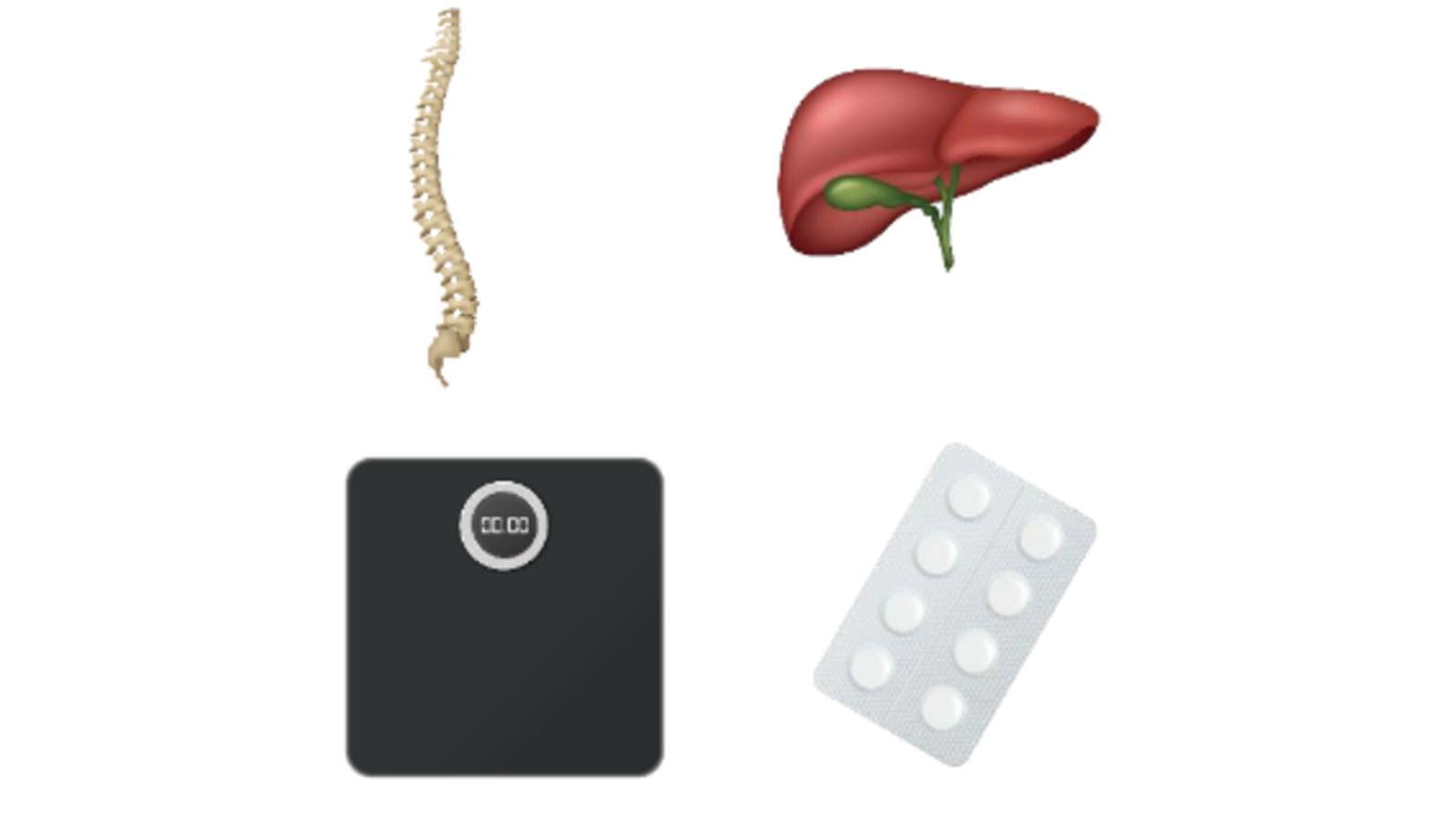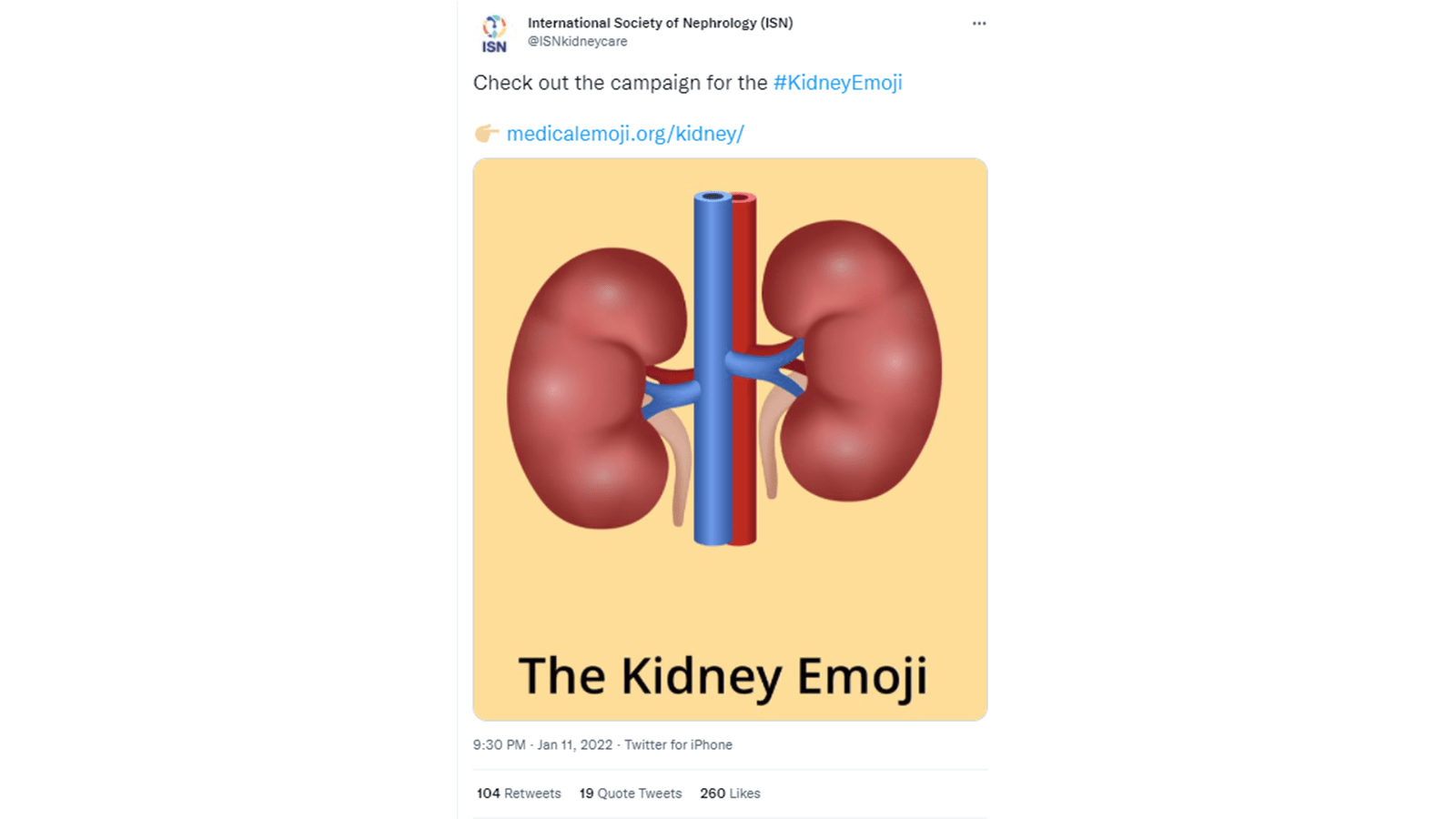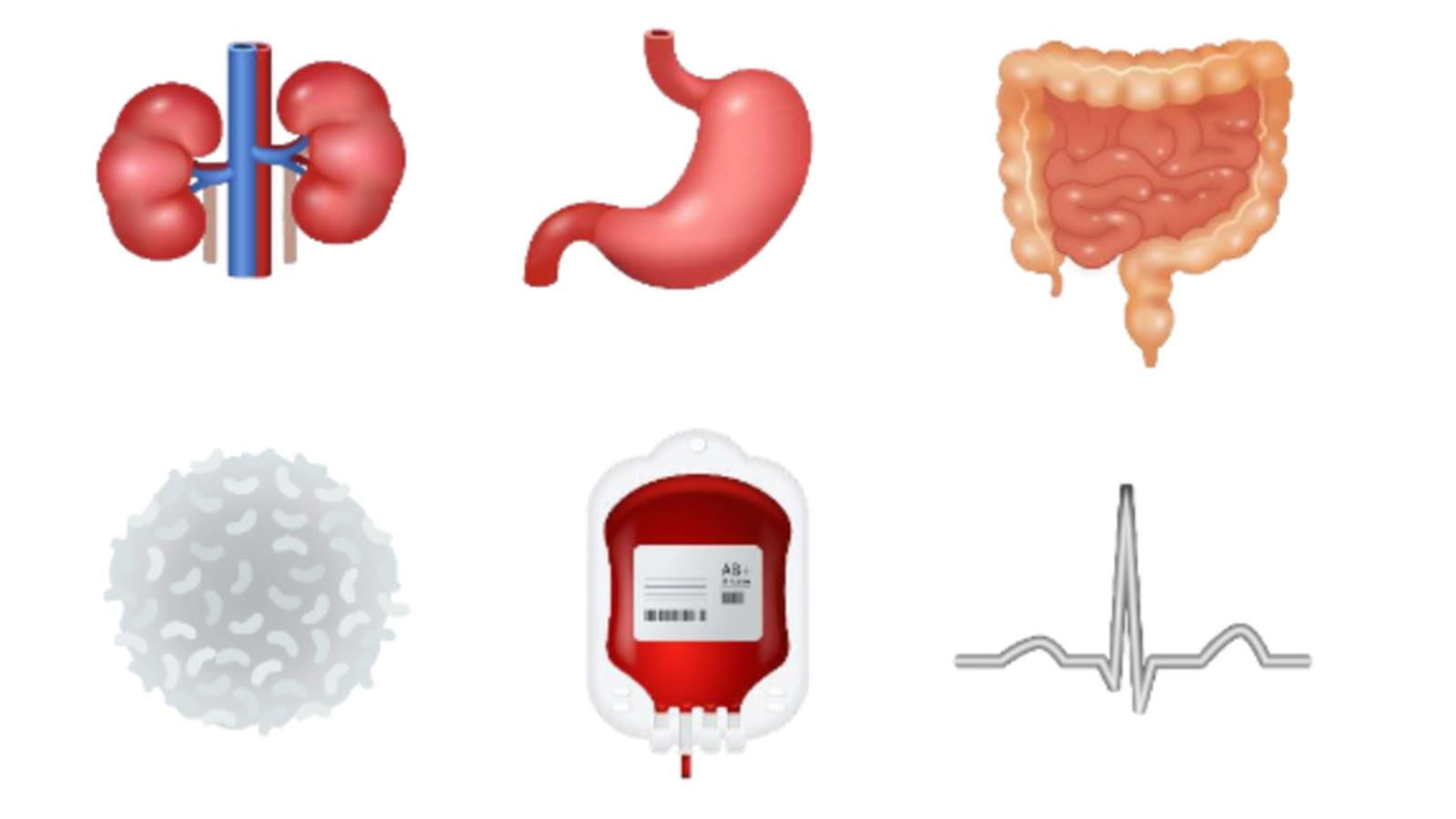If you had a liver emoji, would you use it? How about a white blood cell or a bathroom scale?
A group of doctors believe a set of 10 new emoji representing body parts and health-related objects could increase conversations about important topics. Maybe we would talk more about digestive health if we had, for instance, an emoji for the intestines.
“Ultimately, this is an opportunity to promote, tolerance, inclusion and education about medicine in a modern, accessible, and international way,” the doctors say in a petition on Change.org.

Gastrointestinal specialist and popular Instagrammer Dr. Austin Chiang recently posted that he was leading the effort in support of GI emoji. Several medical groups have already backed the new emoji, he said. They include the American Gastroenterological Association, American Society for Gastrointestinal Endoscopy and the American Association for the Study of Liver Diseases.
Representing the kidneys, the International Society for Nephrology, recently tweeted its support for the kidneys emoji.

The new emoji will “help raise awareness, reduce stigma and make anatomy more accessible for conversation,” wrote Chiang, who is Director of the Endoscopic Bariatric Program at Thomas Jefferson University Hospital and Chief Medical Officer for a medical device company.
Chiang credited Dr. Shuhan He for championing the cause. He requested the realistic heart and lung emoji that are now part of the emoji lineup. He also wrote a paper about medical emoji that was published in the Journal of the American Medical Association. In it, he noted that emoji “have the advantage of being understandable across all language groups.”
At last check, 109 had signed the petition. Organizers are hoping the petition will sway the Unicode Consortium, which manages the catalog of emoji and adds new ones regularly. In addition to the heart and lungs, the consortium has approved a petri dish, lab coat, DNA strand and a virus that looks suspiciously like a green version of the SARS-CoV2 virus, which causes COVID-19. It was introduced before the pandemic but soared in usage in March of 2020.



